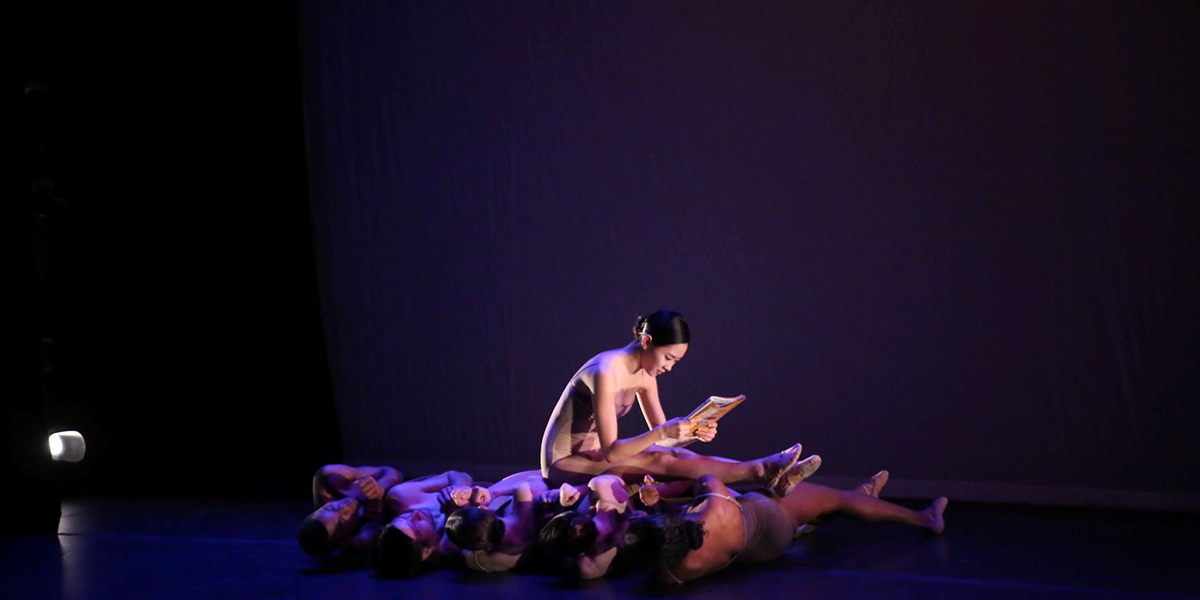Mission speaks to the force behind upcoming dance production, Trap Ist, about channelling current social issues and the labour that goes into it all.
It’s Nutcracker season in the ballet world. But Felice Lesser’s upcoming project featuring AI, alien life forms, and humankind’s fight for existence is light years away from the Christmas classic. Trap Ist, a new Felice Lesser Dance Theater production, will premiere at New York Live Arts from December 1st-3rd.
Over almost five decades in the industry, Lesser has worked as a director, choreographer, playwright, videographer, and animator. Now she combines these disciplines, staging works where digital technology enhances the physical art of dance. Video and computer animation provide a backdrop for her dancers; multiple images create clones or partners with whom they can dance; special effects distort speed, turn dancers upside down, or leave a trail of movement wherever they go. It’s also “relatively inexpensive” to use a PC and camcorder, and “when you’re a dance maker with a small company on a very tight budget, you’re always looking for ways to save money while finding original ways to further your art,” Lesser explains over email.
Another defining part of Lesser’s work is her stance on social problems, addressing homophobia, racism, and sexism in previous works. Her upcoming production deals with climate destruction, the growing influence of A.I. in our lives, and the plight of immigrants. “When social issues go right to the core of our existence – whether the human race will survive, whether our planet will survive, whether our American democracy will survive, I feel it’s not just important, but of the very utmost importance to disseminate these topics in our art.”
The project’s title references the TRAPPIST-1 star in the Aquarius constellation, discovered in 2017, orbited by Earth-sized planets possibly capable of sustaining human life. TRAPPIST-1e, the setting for Lesser’s play, is one such planet. Set in the near future and following a nuclear holocaust that has destroyed Earth, a despotic A.I. has enslaved a group of dancers and beamed them up to TRAPPIST-1e. A fight for survival in the form of dance ensues, aided by the planet’s superior life forms. So, she made a “play on words using the German for “is” – “ist.” Trap Ist. This is a trap.” These planets became a point of inspiration for Lesser as they were discovered at around the same time as Trump’s election and his “ubiquitous presence in our lives.” “He was everywhere. Traveling to the far reaches of the universe seemed a very appealing idea to escape.”
An encounter with African dance professor Cheryl Halliburton, whom she invited to do a workshop for her students at UCONN, also inspired Trap Ist. Halliburton enabled Lesser to better understand “the monumental importance of the Black contribution” to the development of dance in the U.S. “The more I read, the more I understood that American dance would simply not have existed without it.” She, therefore, wove aspects of this into her production and aims to cast people of all races, ethnicities, genders, and ages, going against the traditionally exclusive nature of dance and ballet in particular.
The lead character, played by Maureen Van Trease, is an older woman. “What is it they say? Write about what you know…” muses Lesser wryly. “I’ve now passed the border into senior citizenhood, and while in some ways I still feel like I’m in my twenties, ageism has crept into the equation. There are grants I can’t apply for anymore because I’m no longer considered an “emerging” artist.” She gets candid about working in a field where youth and novelty are valued, and older creatives can be seen as yesterday’s news. With a new batch of young people always joining the scene, “some funders think that since you’ve been around this long, you’re passé.”
Not that this deters Lesser, who’s a largely one-woman operation (though she does collaborate with others for things like music, sets, and animation.) “The administrative work alone could conceivably be done by a staff of ten,” she admits. When responding to my questions, she’s already done more in half a day than most do in a week. (“And the day is far from over,” she notes.)
It’s hard work, but it’s a labor of love. “Art has the power to change peoples’ lives, to make them think, to make them see more clearly, and boy, do we need to see more clearly now!”
Homepage image by Jonathan Burkhardt, inside image by Gerry Goodstein





